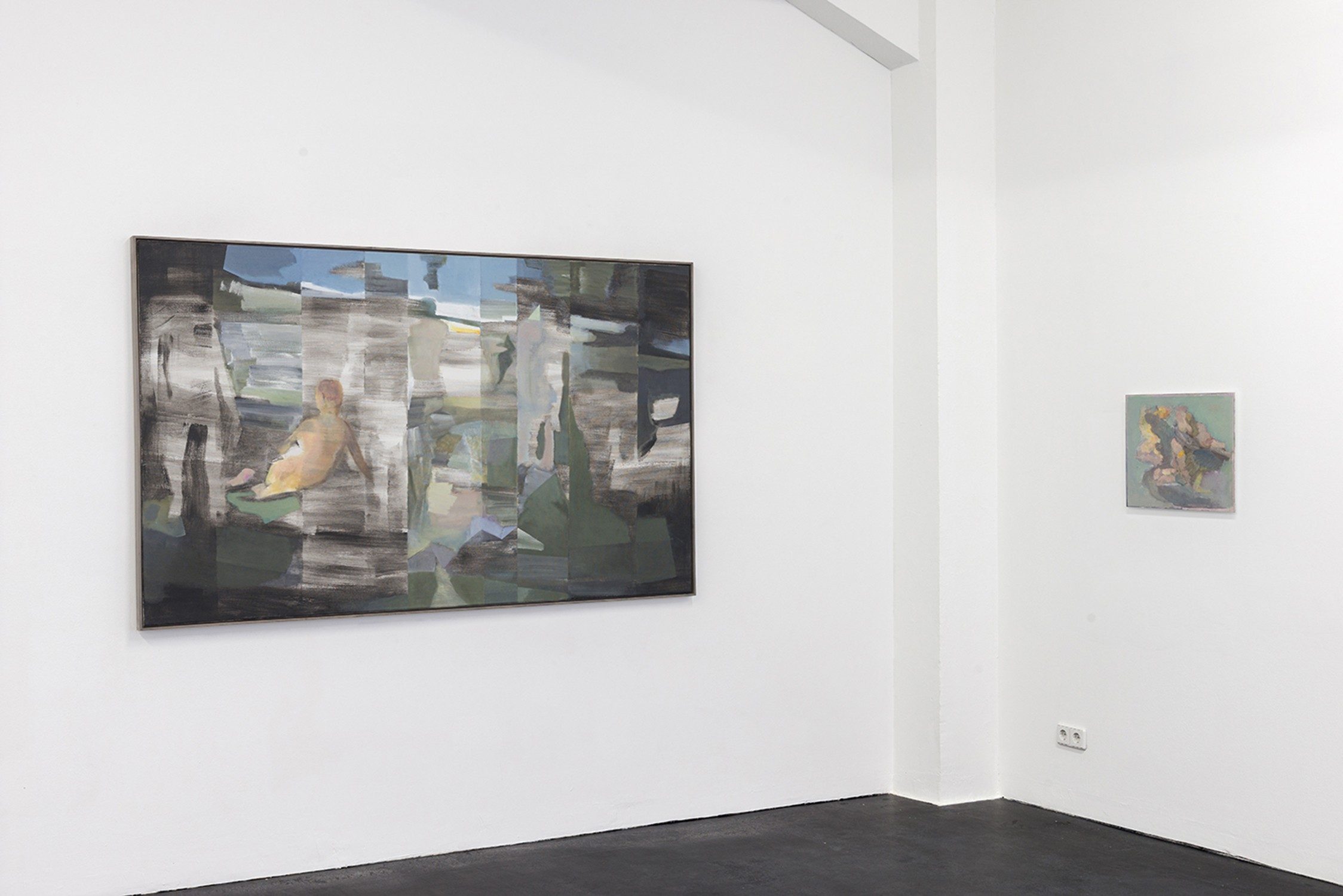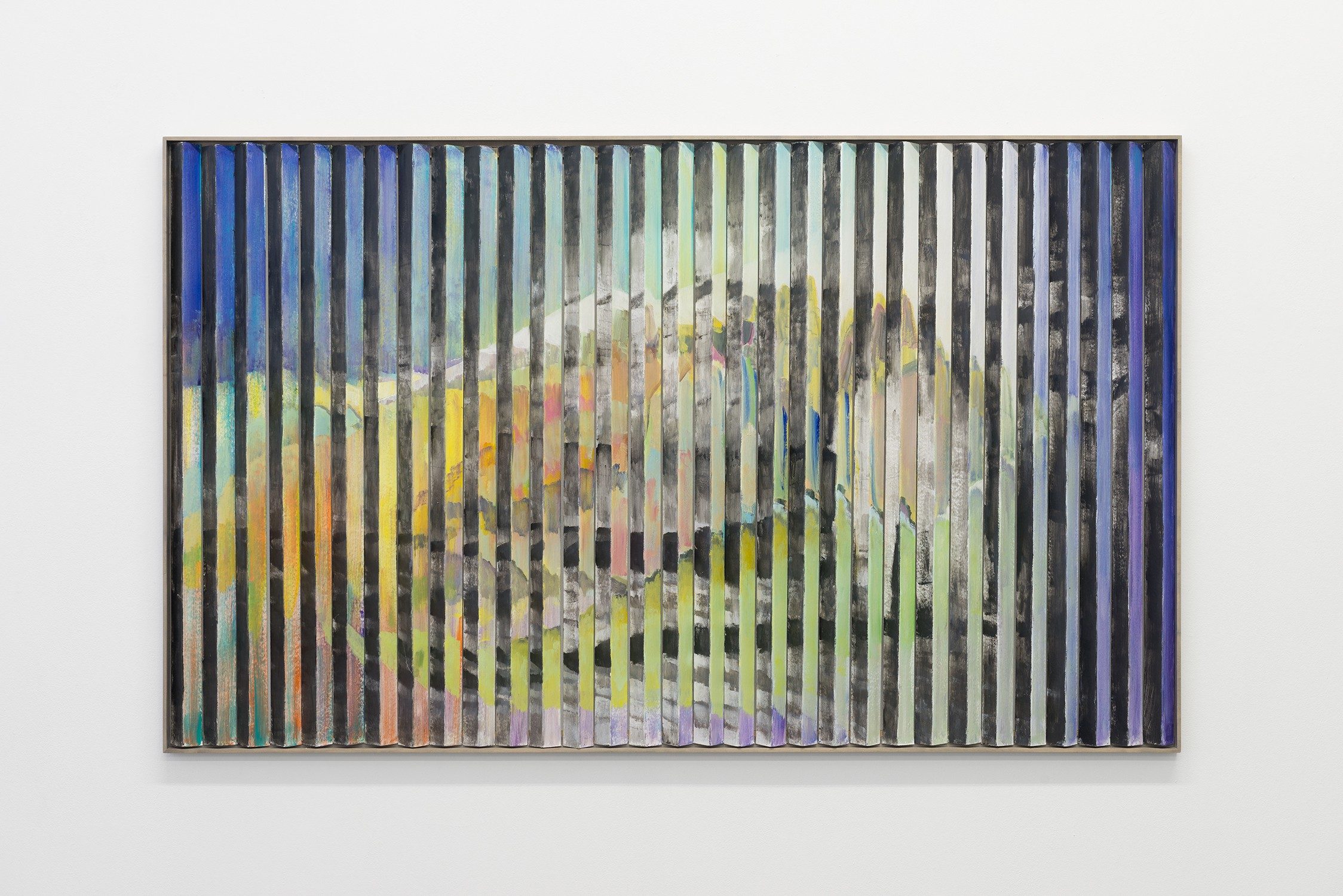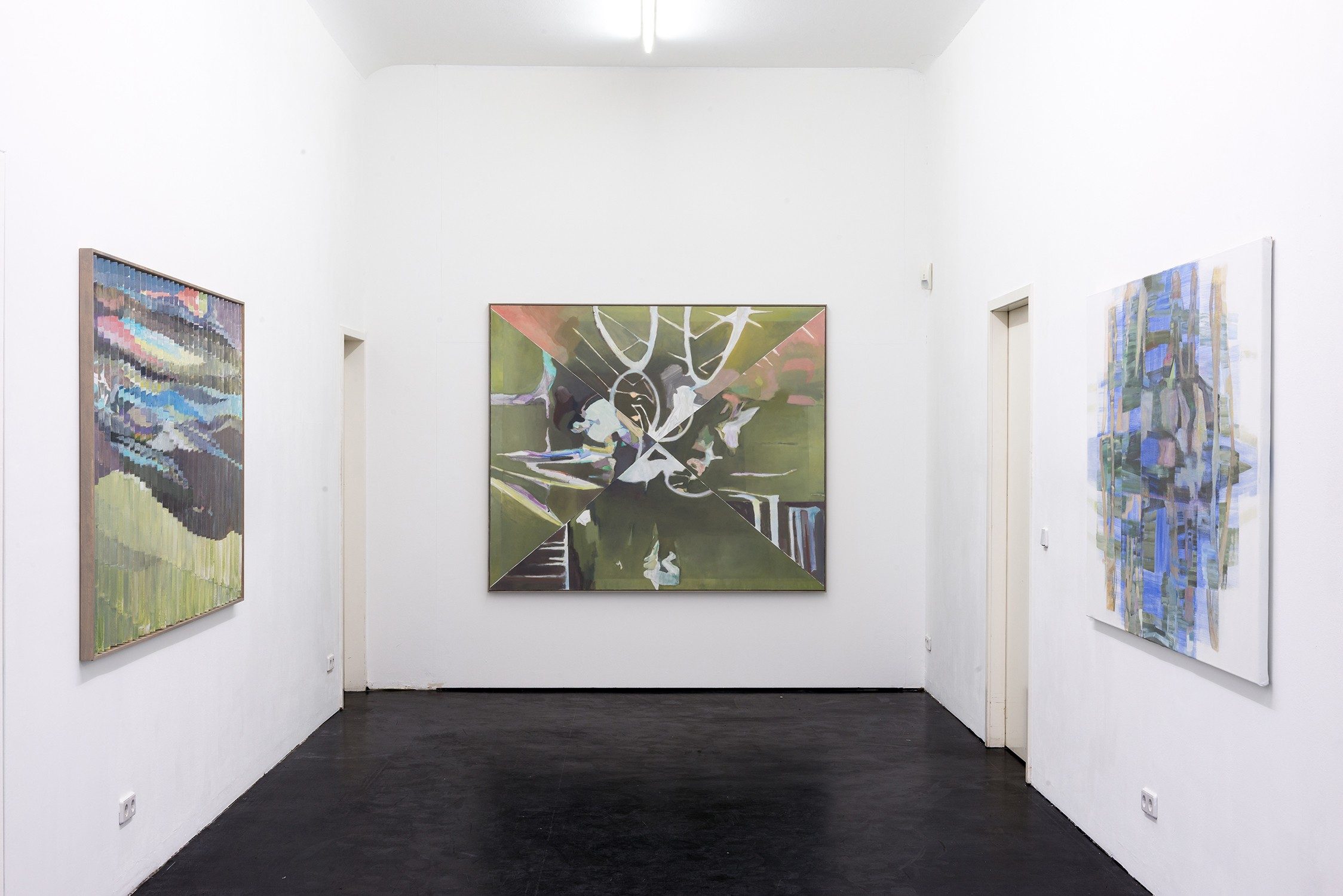




The alexander levy gallery is pleased to present recent works by Daniel Mohr with his new exhibition Retinaex.
The representation of movement has always fascinated the painter, and that has in no way stopped, as moving images not only suggest movement, they can directly capture it. Shortly before images really “learned how to walk”, the photographs of Eadweard Muybridge and Étienne-Jules Marey dissected the movements of humans and animals into individual phases. Many contemporary artists were very impressed by this, but not the sculptor Auguste Rodin. Rodin defended Géricault’s representation in the painting The 1821 Derby at Epsom (1820), which shows the horses with both front and rear legs in the air simultaneously, and which is “refuted” by the snapshots. Photography cannot truly represent life, because it only picks out a moment from an organic flow: “While my St. John the Baptist is represented with both feet on the ground, a photograph of a model in the same position would show one foot already raised and about to move forward. Or one might see the exact opposite, that the front foot doesn’t yet touch the ground while the rear leg occupies the same position in the photograph as in my statue. This photographic model would thus present the curious sight of a suddenly lamed person who appears to have been petrified in this position…”.[1] The following was a certainty for Rodin: “The artist is true and photography lies; because in reality time does not stand still…”.[2]
However, despite all the possibilities to represent and simulate movement, up to and including digital 3D animation, there are still artists who mistrust the alleged superiority of the technical image and continue to rely on classic artistic media.
These include Daniel Mohr, who teases new aspects out of the movement image in the truest sense of the word using only brush and paint, and with his choice of a special pictorial ground. However, it is not the representation of the moving body or of racing cars or airplanes, as with the Futurists, which interests him. He prefers relaxed, “pastoral” motifs that radiate inner peace. The suggestion of movement in his “common” paintings arises from the fact that vertical stripes break up the motif, which is reminiscent of reflections in offset glass surfaces. The movement of the viewer in front of the painting also seems to be captured.
Other paintings by Mohr are splining paintings, which first take on meaning from actual movement in front of them, like with anamorphoses or many geometric effects of Op Art. Here the artist doesn’t paint on a flat canvas, but instead on a relief-like series of cardboard slats, which he has mounted vertically next to one another, so that two of them, placed at an angle of 90 degrees, form a triangle. Each splining painting contains two different motifs. The respective surfaces to the left and right show elements of an image dismantled into slats. Like with anamorphoses, which appear distorted from a “normal” perspective, each of the two images can only be seen in its entirety from a certain angle, as if it were on a flat ground. When walking by, a piece of the other “side” is always visible, until the second image appears as a unified image after many intermediate steps.
What in physical terms is “one” image or the amalgamation of two, becomes an endless number of individual images in the eye of the beholder, a “film” that comes into being in the mind. This is reminiscent of the fan-shaped relief images of the Op Artist Yaacov Agam, which look different from every position.
That an “image” is ultimately first composed in the eye has been proven by many theories in optics, with which the Impressionists and many painters of Classical Modernity had already occupied themselves. Daniel Mohr also allowed himself to be inspired by theories of optics and color, for example, by the retinex theory of Edwin H. Land, the inventor of Polaroid photography, which was published in 1971. Land discovered that it is possible to create a nearly true-to-life color image with black and white photo film and preceding red and green lenses when the appropriate precautions are taken. The eye is thus capable of seeing a color image in a black and white composition illuminated with only two colors (with only one color in later experiments). Which is nothing other than the phenomenon of color constancy.
However, can the eye correctly interpret the splining paintings under the conditions of a single representation? Daniel Mohr allows painting to prevail over its technical multiplication, so to speak, in that he outwits its reproducibility. Images that only become accessible through the movement of the viewer cannot be reproduced in their entirety. What we see in this publication is like the relation of individual stills to a complete film.
Ludwig Seyfarth
[1] Auguste Rodin, Die Kunst. Gespräche des Meisters. Collected by Paul Gsell, Zurich 1979, p. 72.
[2] Ibid., p. 73.